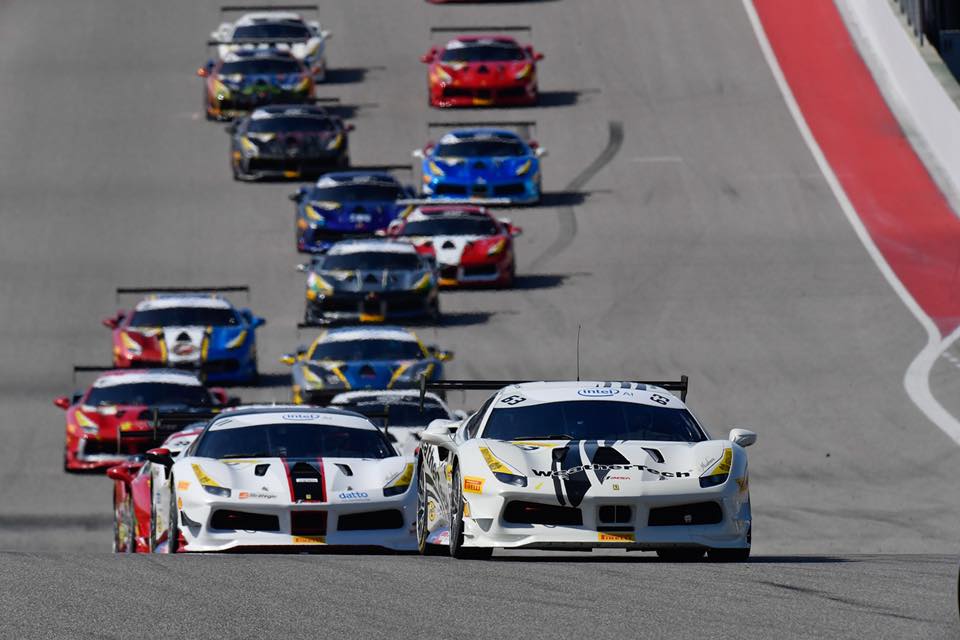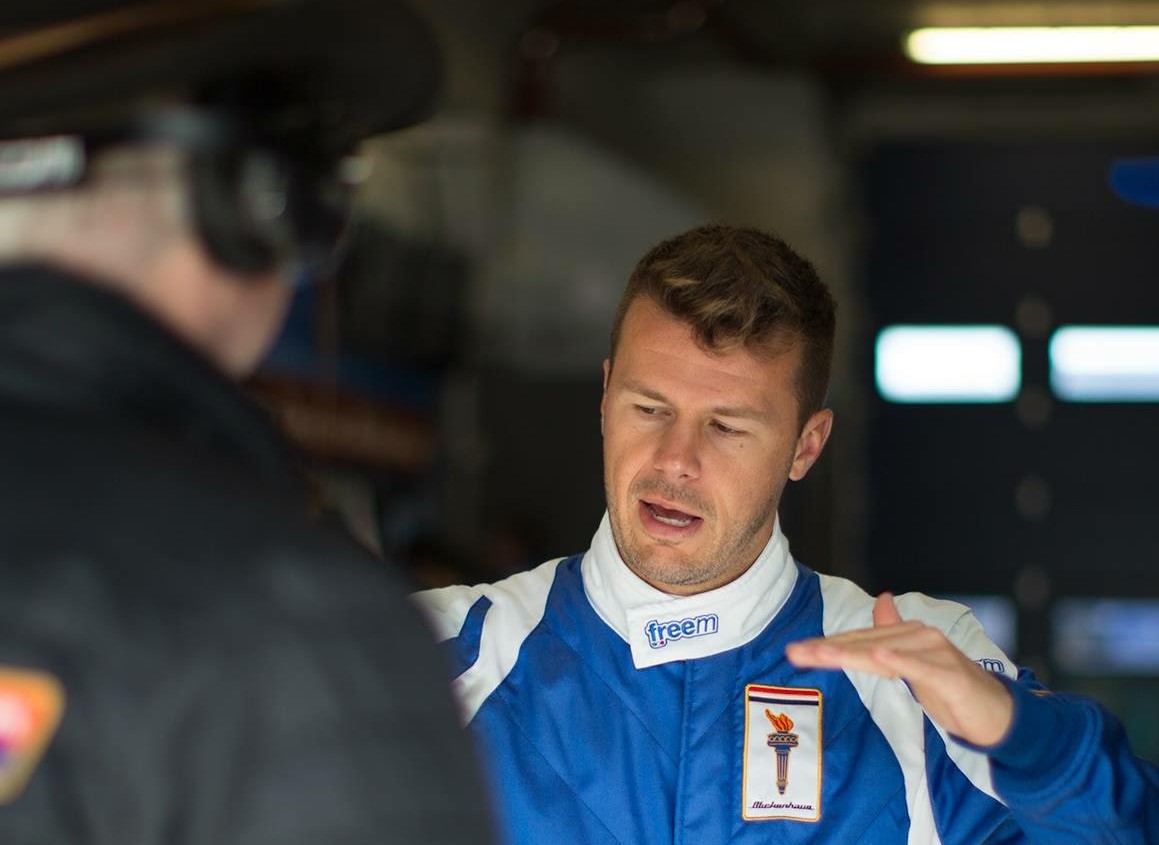Jeff Westphal is the head driver coach for Scuderia Corsa’s program in the Ferrari Challenge series. In that role, he oversees a team of driver coaches as well as a large number of drivers with a broad range of skill and experience levels. But when Westphal speaks with his drivers, they know he speaks with authority. A multiple race-winner in IMSA and Germany’s GT3 championship, he is the only American driver to qualify on pole in the 24 Hours of Nurburgring where he competes for Scuderia Cameron Glickenhaus in the VLN Endurance Championship.
While Westphal primarily spends his time with his drivers at the track, reviewing data and video to help them come up to speed, he has also spent time with his drivers away from the track utilizing the CXC Simulations Motion Pro II. Over the years he has noticed common struggles or failure points in the driving craft of beginners, and from that he has come up with a number of ways a CXC Simulations Motion Pro II can benefit his Ferrari Challenge drivers/students – with each compounding step adding up to significant on track improvements.
Visual Memorization
“This is really about getting a driver familiar with a circuit they haven’t seen before, which will give them a higher level of comfort when they arrive. Comfort is the key to going fast because we are all fear limited in some way. I try to teach them the visual references that have helped me be successful, point out track surface changes for differences in grip, brake markers, and blind crests. Getting the drivers to use their eyes correctly is the speed secret that is often overlooked, so a fair amount of time can be spent working on when and where to look before we’ve spent any money on fuel, tires, brakes, engines, axles, etc. Most importantly, there is a reset button on the simulator that doesn’t cost anything in case of a mistake early on. The strong visual options of the Motion Pro II, whether we use Virtual Reality or the triple screens, make it a great tool for this.”
Habitual Training
“Much like a test day at the track, I will get a driver to work on the mechanics of their inputs. This is the language of the tire, and the tire is the only thing that touches the ground. So, we’ll work on brake release, brake application, steering application, throttle release and application – and then tie it all together with the concert of all four that allows the maximum grip to be utilized in the friction circle. The Motion Pro II uses a Tilton hydraulic brake pedal system with a lot of adjustability, so the feel can closely match the cars that my students are currently racing which translates to familiarity at the circuit. And because I can see exactly what the drivers are doing instead of relying on the data traces, the coaching can be much more direct, and I can provide feedback in real time. This is hugely helpful in getting ahead of the car when it oversteers as nine of 10 new racer’s hands are too slow to catch the spin. Because the input received by the drivers in the Motion Pro II is so accurate, with the inertia building rationally, I can coach them on what to do and when so they don’t end up in the fence.”
Logistics Training

“One other upside to the simulator is the ability to learn some of the details about a track or a race situation that you don’t get the chance to encounter until race weekend. For example, we can practice pit entries and pit exits, and also simulate when other cars enter the pits or exits the pits ahead of them – allowing them to not get caught off guard when they encounter those situations for the first time on track. Using a pit lane speed limiter is something that is tough for a new driver to remember, so procedurally we can ingrain this habit so it’s subconscious come race weekend and not incur a penalty that affects our performance. Another thing we can spend time on is learning how to quickly make adjustments to the electronics on the steering wheel, which is obviously safer to learn in the simulator than on the track. If you’re trying to find where the control is and what it does while you’re on track, you are not maximizing the car or the grip, period. Subconscious is the way to go, and the only way to get there is with repetition.”
Mental Endurance
“Once we’ve gotten to a point where the drivers are comfortable with everything else that we’ve worked on, we put it all together and go for long runs. What I am looking for here is for the drivers to go 1.5 times their race distance as mistake-free as possible. This is much like cardio endurance, so much like a marathon, when you can do more than the required length of competition the actual race itself is a no brainer. The Motion Pro II provides physical loads and feedback very similar to the race cars, so the drivers have the true workout of going 1.5 times the race distance. Even If we add extreme heat to the race weekend, the brain is more relaxed due to seeing the motions before, which is less physical load on the body and can make for better physical endurance as well. If we can get them to that point, we really increase their chances of success by putting them in a place where they are minimizing their mental mistakes and looking to the finish with fresh eyes and decision making. In 600+ HP racecars, every little bit helps!”
Westphal’s approach to coaching with the CXC Simulations Motion Pro II was proven again by the results of the most recent Ferrari Challenge race at WeatherTech Raceway Laguna Seca. Scuderia Corsa drivers captured ten podium finishes over the two days, including three victories and a sweep of the top four positions in the Coppa Shell class by drivers who train with a CXC Simulations Motion Pro II. Configure yours today.

